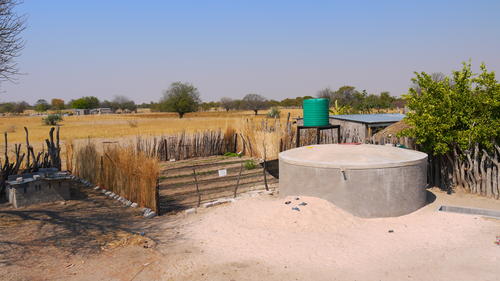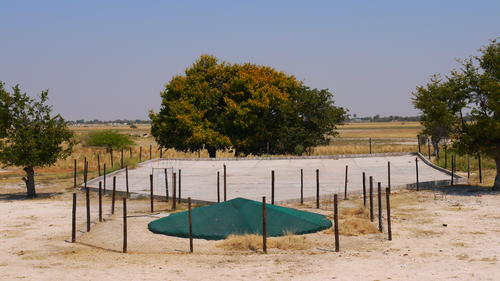Rooftop and courtyard water harvesting
Rooftop and Courtyard WH (Rooftop-Courtyard WH) are getting more and more popular in both developed and emerging economy countries (e.g. Australia, the Caribbean, China, India, and the South-Pacific) to secure / improve water supply for domestic use such as sanitation or garden irrigation.
Roof and courtyard WH provides water close to home. Rainfall is collected as it runs off the catchment area of house roofs or compacted / paved surfaces in and around courtyards. The collected water is transported through a conveyance system of gutters and downpipes to storage facilities of various types. Closed storage systems can be above ground, below ground or a combination of these. Depending on size, shape or location they are called “tank”, “jar”, “drum” or “cistern”. The collected water is used for drinking, domestic use and livestock consumption, as well as irrigation of small kitchen gardens and backyard crops, depending on the need and quality of water harvested.
Roof materials suitable for water harvesting can be of many sorts, depending on technology, natural conditions and affordability. These include galvanized corrugated iron, aluminum or cement sheets, and tiles and slates. In many tropical countries thatch, bamboo or palm-leafed roofs can provide a low-cost alternative. However, they are difficult to clean and can taint runoff. Guttering, downpipes, filtration and storage facilities can be of a very simple type and made of locally available materials or specifically manufactured for the purpose. Clearly, the larger the roof the bigger the runoff yield: rainwater potentially collectable from a roof over one year can be estimated as the annual rainfall times the roof’s plan area – but in the tropics only about 85 % of this water runs off the roof. The remaining 15 % are typically lost to evaporation and splashing. If the rain falls mainly as light drizzle, as in some more temperate countries, even more than 15 % will be lost in this way through slow evaporation. Water quality can be protected by adding a filtration device or by “first flush” process. Rooftop Courtyard WH is usually made use of by individual households, but also by communal / public institutions such as schools or hospitals, or commercial companies.
(Mekdaschi & Liniger 2013)
Read more about themain characteristics, benefits and disadvantagesof Rooftop-Courtyard WH.

